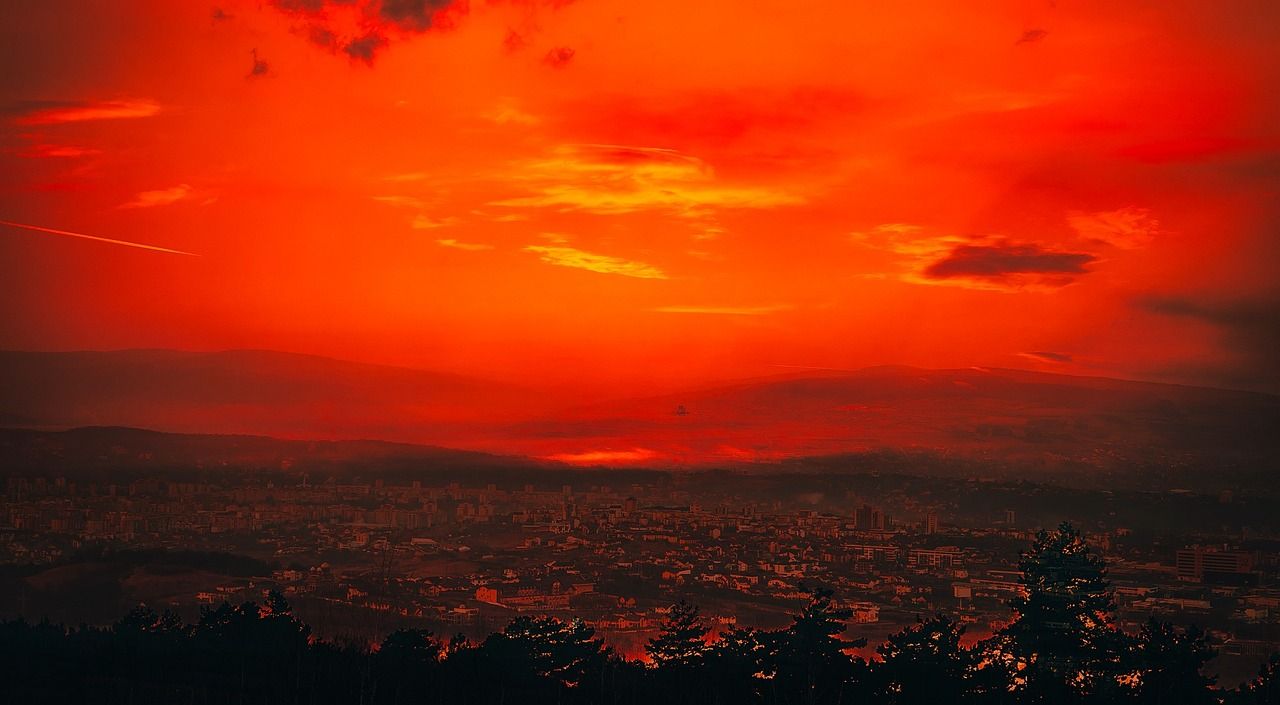



Cluj-Napoca 소개
Cluj-Napoca는 루마니아 북서부에 위치하고 있으며 트란실바니아 언덕 사이에 자리 잡고 있으며 중부 유럽과 동유럽 사이의 관문 역할을합니다. 이 생생한 도시는 방문객들에게 현대 문화와 함께 풍부한 역사를 탐구 할 수있는 기회를 제공합니다. Cluj-Napoca는 루마니아에서 가장 중요한 경제 센터 중 하나 인 것으로 가장 잘 알려져 있으며 세기에 거슬러 올라가는 건축을 통해 역사적인 매력을 유지합니다.
주요 명소 및 관심 지점
Cluj-Napoca는 역사, 문화 및 자연의 아름다움 사이의 균형을 추구하는 방문객들에게 호소하는 몇 가지 명소를 자랑합니다. 두 가지 예는 다음과 같습니다.
1) 마티스 이웃 : 클루 즈의 역사적인 핵심에 위치한이 동네는 수세기가 거슬러 올라갑니다. 방문객들은 조약돌 골목을 방황하거나 지역 역사에 대한 통찰력을 제공하는 가이드 투어에 참여함으로써 그 매력을 탐구 할 수 있습니다.
2) 로티 센스 팰리스 : Cotrocini 동물원 꼭대기에 위치한 Lotissiens Palace는 방문객들에게 건축가와 함께 자연의 아름다움을 목격 할 수있는 기회를 제공합니다. 궁전에는 독특한 정원과 아르테시아 분수가 있으며 그림 같은 주변 환경 속에서 휴식을 취할 수있는 기회도 제공됩니다.
문화 및 역사적 맥락
Cluj-Napoca의 역사는 2 세기 초에 로마인들이 설립 한 로마 제국 정착지에 뿌리를 내며 세기로 거슬러 올라갑니다. Cluj는 나중에 헝가리 통치하에 중세 도시로 진화했으며, 현대에 오스트리아의 영향을받을 때까지 트란실바니아의 수도로 지정되기 전에. 이 풍부한 문화 유산은 루마니아 관습과 전통과 함께 다양한 역사적 시대의 영향을 보여주는 건축을 통해 반영됩니다.
방문자를위한 실용 정보
세 가지 필수 여행 팁에는 다음이 포함됩니다.
– 방문하기 가장 좋은시기 : Cluj -Napoca는 봄 달 (4 월 -6 월) 동안 쾌적한 기온으로 온화한 날씨를 경험합니다. 이것은 극도의 열을 다루지 않고 야외 명소, 정원 또는 공원을 탐험하는 데 이상적입니다. 그러나 방문객들은 여행을 계획 할 때 추운 겨울과 가을에 준비해야합니다.
– 지역 관습 : 루마니아 인의 가치는 가족 가치와 함께 환대. 방문객들은 지역 주민들이 관광객을 환영하는 것을 발견 할 수 있지만, 역사적 유적지를 방문하는 동안 방해의 행동이나 과도한 소음을 피함으로써 현지 관습을 존중하는 것이 필수적입니다.
– Cluj 탐색 : 현지인들은 Cluj-Napoca에서 주로 루마니아어를, 영어를 구사합니다. 방문객들은 도시를 효과적으로 탐색하기위한지도, GPS 장치 또는 가이드와 함께 의사 소통 목적으로 기본 루마니아어 문구를 배우는 것이 좋습니다. 또한, 현지인들이 영어를 유창하게 말하지 않을 수있는 Cluj-Napaca 밖에서 여행하는 경우 필수 루마니아어 단어를 아는 것이 유리합니다.
결론 : Cluj-Napoca가 방문 할 가치가있는 이유
Cluj-Napaco는 방문객들에게 다양한 명소, 아르테시아 분수 및 조약돌 거리를 통해 현대 문화와 함께 역사적인 매력을 탐색 할 수있는 기회를 제공합니다. 루마니아 관습과 결합 된 세기가 거슬러 올라가는 풍부한 역사는 지역 유산에 대한 통찰력을 제공하면서 그림 같은 주변 환경 속에서 휴식을 취할 수있는 기회를 제공합니다. Cluj-Napaco의 호소는 트랜스 실바니아의 매력에 뿌리를 둔 진정한 경험을 추구하는 방문객들에게 호소하는 자연의 아름다움과 함께 다양한 역사적 시대의 영향을 반영하는 건축의 균형 잡힌 혼합에 있습니다.
정보 출처: Cluj-Napoca Wikipedia
View Original English Content
Introduction to Cluj-Napoca
Cluj-Napoca is located in the northwestern part of Romania, nestled among Transylvanian hills and serving as a gateway between central Europe and Eastern Europe. This vibrant city offers visitors an opportunity to explore its rich history alongside modern culture that blends traditional Romanian customs with contemporary influences. Cluj-Napoca is best known for being one of Romania’s most important economic centers, while maintaining historic charm through architecture dating back centuries.
Key Attractions and Points of Interest
Cluj-Napoca boasts several attractions that appeal to visitors seeking a balance between history, culture, and natural beauty. Two examples are:
1) The Matis Neighborhood: Located in Cluj’s historic core, this neighborhood dates back centuries with narrow streets leading up to the gothic St Michael Church (Biserica Sâl din Matau). Visitors can explore its charm by wandering through cobblestone alleys or joining guided tours that provide insight into local history.
2) Rotissens Palace: Situated atop Cotrocini Zoological Park, Rotissiens Palace offers visitors a chance to witness natural beauty alongside architectural marvels. The palace features unique gardens and artesian fountains, while also providing opportunities for relaxation amidst picturesque surroundings.
Cultural and Historical Context
Cluj-Napoca’s history dates back centuries with its roots in Roman Empire settlements established by Romans during the early 2nd century AD. Cluj later evolved into a medieval city under Hungarian rule, before being designated as capital of Transylvania until it fell under Austrian influence in modern times. This rich cultural heritage is reflected through architecture that showcases influences from various historical periods alongside Romanian customs and traditions.
Practical Information for Visitors
Three essential travel tips include:
– Best Time to Visit: Cluj-Napoca experiences milder weather with pleasant temperatures during spring months (April – June). This is ideal for exploring outdoor attractions, gardens, or parks without dealing with extreme heat. However, visitors should be prepared for cold winters and wetter autumns when planning their trip accordingly.
– Local Customs: Romanians value hospitality alongside family values. Visitors may find locals welcoming towards tourists, but it is essential to respect local customs by avoiding intrusive behavior or excessive noise while visiting historical sites.
– Navigating Cluj: Locals speak Romanian primarily and English secondarily in Cluj-Napoca. It’s recommended that visitors learn basic Romanian phrases for communication purposes alongside maps, GPS devices, or guides to navigate the city effectively. Additionally, it would be beneficial to know some essential Romanian words if traveling outside of Cluj-Napaca where locals may not speak English fluently.
Conclusion: Why Cluj-Napoca is Worth a Visit
Cluj-Napaco offers visitors an opportunity to explore historic charm alongside contemporary culture through its diverse attractions, artesian fountains, and cobblestone streets. Its rich history dating back centuries combined with Romanian customs provides insight into local heritage while also offering opportunities for relaxation amidst picturesque surroundings. Cluj-Napaco’s appeal lies in its balanced mix of architecture reflecting influences from various historical periods alongside natural beauty that appeals to visitors seeking an authentic experience rooted in Transylvanian charm.

답글 남기기